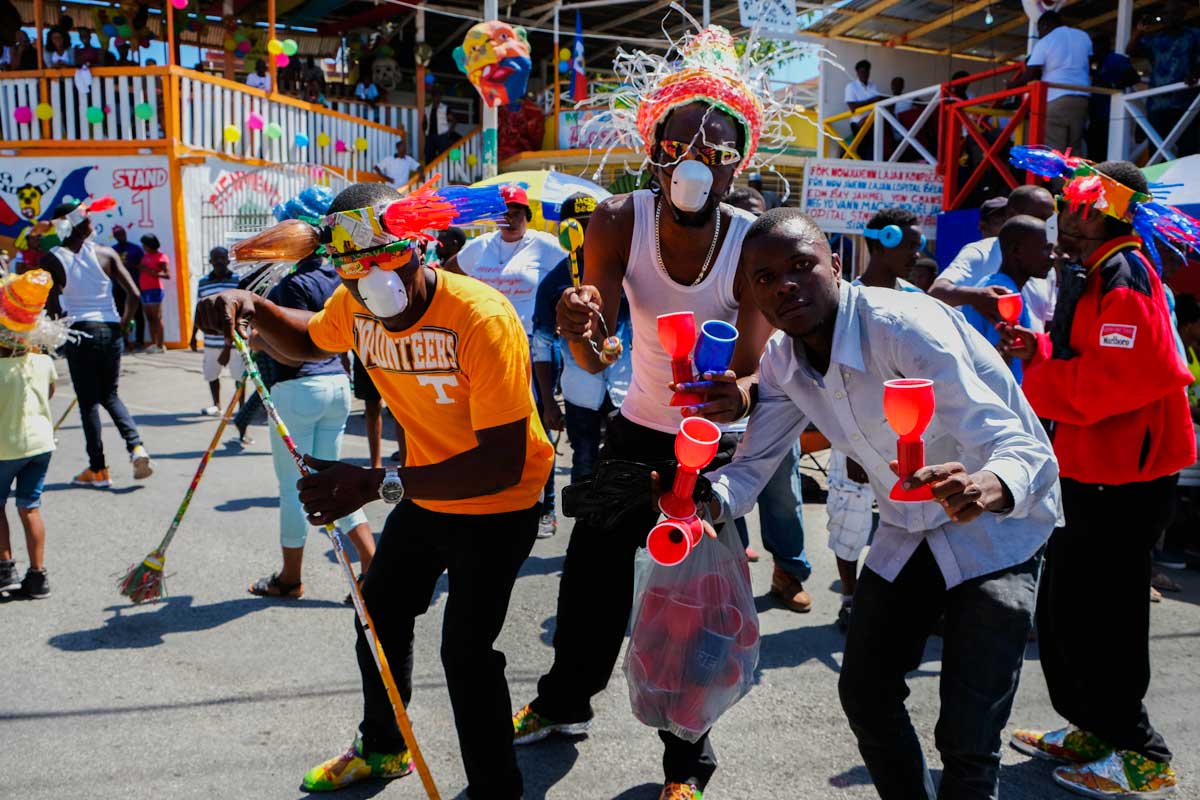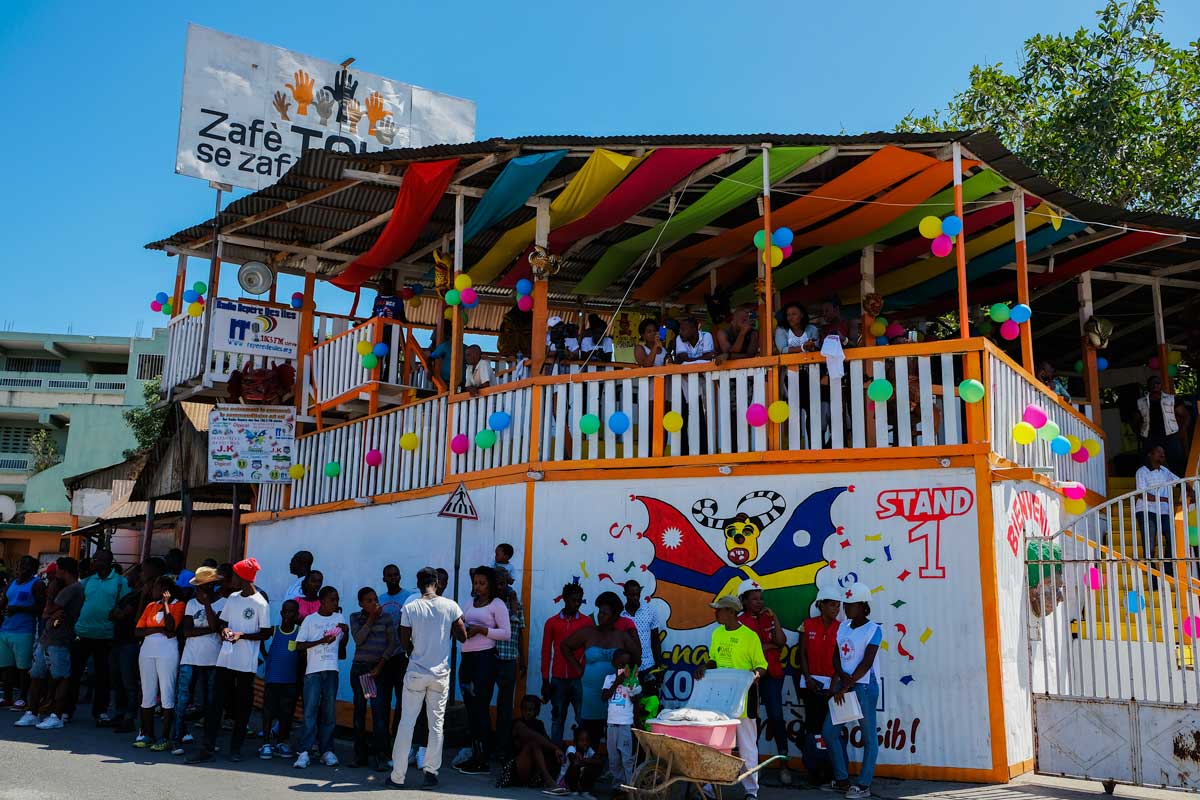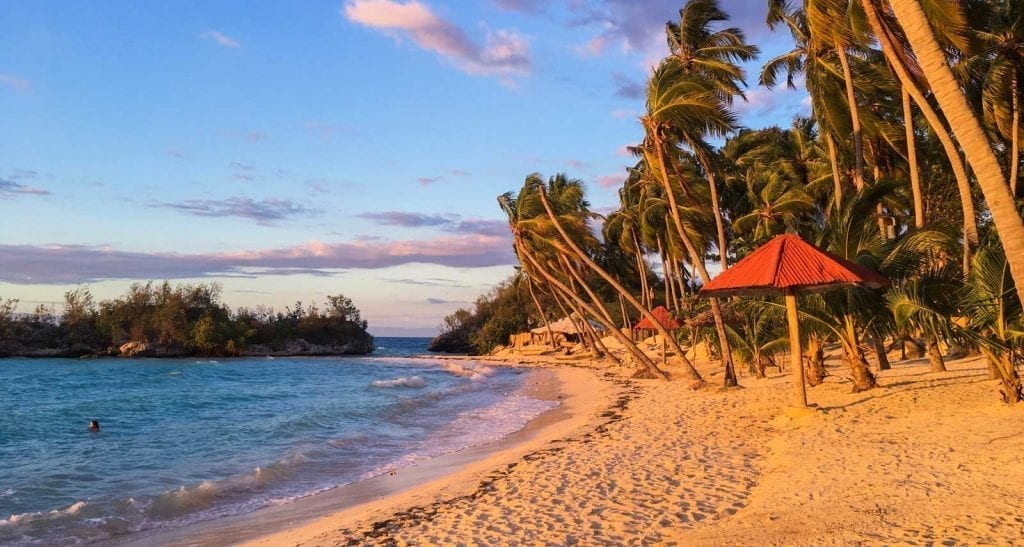Things to do
Party like a Haitian at Jacmel Carnaval
Jacmel Carnaval
Photo: Frank Fontain
A weekend at Jacmel’s annual Carnaval is the ultimate way to saturate your senses in the essence of Haitian culture. Here’s how to join the party.
Share
An Afro-Caribbean cousin of Mardi-Gras, Carnaval is much more than a party. It’s a season spirit that sweeps over the nation every year, creating an outlet for creativity, revelry and the uninhibited celebration of all things Haitian: brave colors; bold flavours; incredibly good, cheap, rum; intoxication music and dancing; an undercurrent of mysterious folklore and mischievous gods; the visibility of a colonial past and a fiercely independent spirit.
If you’ve only got a short break to spend in Haiti, the last thing you want to do on arrival is spend more of your precious time journeying cross country or taxiing around the city looking for action. So why not plan ahead and make your long weekend a non-stop party, instead?

Carnival in Jacmel
Photo: Frank Fontain
Getting here
Flights depart most major US airports for Port-au-Prince daily, with prices starting from $200-$300 US depending on your point of departure. Once in Port-au-Prince, you can get to Jacmel via private taxi, Moto or public transport in minivans known as Tap-taps. The trip takes about 3 hours: luckily, it’s the best quality-road in the country and offers some of the prettiest roadside scenery.
A tap-tap will only set you back about US$10, but it’s not for the faint-hearted: expect it to be cramped and stuffy, and embrace the chance to get out of your comfort zone. For best results, get in early and head for the back row which offers fresh air and good access to the view of passing countryside.
Once you arrive in Jacmel, prepare to be swamped by moto drivers who will enthusiastically vie for the chance to drive you to your accommodation. If you’re travelling light, you can walk: Jacmel is compact and everything’s within walking distance. If you feel like starting your trip with a shot of adrenaline, you can jump on a moto, but not before you read this guide.
Where to stay
If you book in advance, you can find accommodation at a spectrum of hotels, from historic lofty-ceilinged mansions of Victorian coffee barons like Hotel Florita to ocean view Airbnb villas with their own pool overlooking Jacmel bay like the Chic Chateau to family-owned hotels with private beach like Cyvadier Plage and maybe even a couchsurfing couch.
Whatever you choose, your local host will probably share with you their favourite way to enjoy Carnaval weekend.

Body paint at Jacmel Carnaval
Photo: Frank Fontain
How to party
First up, this is a three-day party. Slow and steady wins the race, so don’t get too swept away by the strange tides you can feel overtaking the city. The joy of Carnaval is in the air, but it’s ok to enjoy the atmosphere from afar while you settle into your room and crack open the first drink of the weekend.
If you make the rookie mistake of partying too hard on Friday night, you’ll be hitting the snooze button while everyone else is hitting the beach. On the Saturday morning of Carnaval weekend, the best thing to do is to pack a bag and head to the beach where it’s time to socialize, surf, and sip coconut water and rum.
As the moon rises over the gorgeous 3km-wide expanse of Jacmel bay, it’s time to choose your party. Head to the Vatican for house-crowd-pulling DJs. Get amongst something live and local at Congo Beach Club or Suave, where they usually feature live concerts with a variety of artists. Kreyol La, Carimi, T-Vice and RAM are more good choices. Stay up as late as you like, but remember that Sunday is the big finale.
This brings us to the final stretch of the weekend: Sunday, and the main event. “Kanaval” proper is a parade the floods the streets with song and rhythm and color. The creativity and intricacy of the masks is constantly astonishing: alongside the primary colors, voluminous dresses and cornucopia-turban-hats you expect, you’ll see a much more modern palette of costumes, body painting and masks that veer into the dark, bizarre and surreal, rivalling the novelty and extravagance of Burning Man.
All this is set to a ceaseless backdrop of Caribbean rhythm and voices lifted in song, often creole. The bands have an impressive level of energy and stamina, and the “cha” will teach you that music can be played louder than you thought was possible. For the next twelve hours, the main streets will be packed with movement as the crowd parties throughout the night and into the early hours of Monday.

Carnival stand at Jacmel Carnaval
Photo: Frank Fontain
Carnaval stands
It’s recommended to fork out $10-$30 for a ticket to a stand. You can leave your belongings up there and disappear into the crowd, ride the wave of the parade participants, and then return for a rest when you need to.
Travellers who are in Haiti on a budget might be tempted to forgo a seat in one of the Carnaval stands that looks out over the parade, but their hopes of getting closer to the action and a more authentic (and cheaper) experience will soon be dashed against the rocks of inconvenience and exhaustion. It’s much better to have a spot on a stand and not use it than to need a spot on a stand and not have it.
If you sprinted into the weekend on Friday night with a big hoorah then the parades, rara bands and cha’s on Sunday will more than likely exceed your tolerance for stimulus. But if you start your weekend off right, you’ll be able to keep up with the rum cocktails, the rara and cha.
Carnaval is vibrant mayhem, organized chaos, unfathomably loud, fascinatingly beautiful, and will surprise you year after year. Because, let’s be honest, once you’ve experienced it…you’ll be back.
Explore more festivals and events
8 Cheap and Free Things to Do in Haiti
Haiti offers a wealth of wildlife, nature, arts and culture
Catch a show with Haitian Vodou rock band RAM
Every Saturday night at the Oloffson, the band RAM delivers
Rhythms and Rituals at Lakou Soukri’s Vodou Festival
Dive into the heart of Haiti with a journey to
PAPJAZZ 2021
Every year in January, Haiti’s must-visit Jazz festival transforms Port-au-Prince
Vodou Pilgrimage to Saut d’Eau
Every year, this one-of-a-kind Vodou pilgrimage brings together crowds of
Festi Graffiti – Haiti’s International Festival of Urban Arts
Haiti may be known for beaches and rum, but the
Photo Journal: Fèt Gede – A celebration of Life on the Day of the Dead
See photos from Fête Gede and take part in the
Lansèt Kòd – the Haitian Tradition You’ve Probably Never Heard Of
Discover the truth behind the strange and captivating Haitian carnival
Categories
Tags
Share
Subscribe to our newsletter
Get more travel inspiration, tips and exclusive offers sent straight to your inbox

